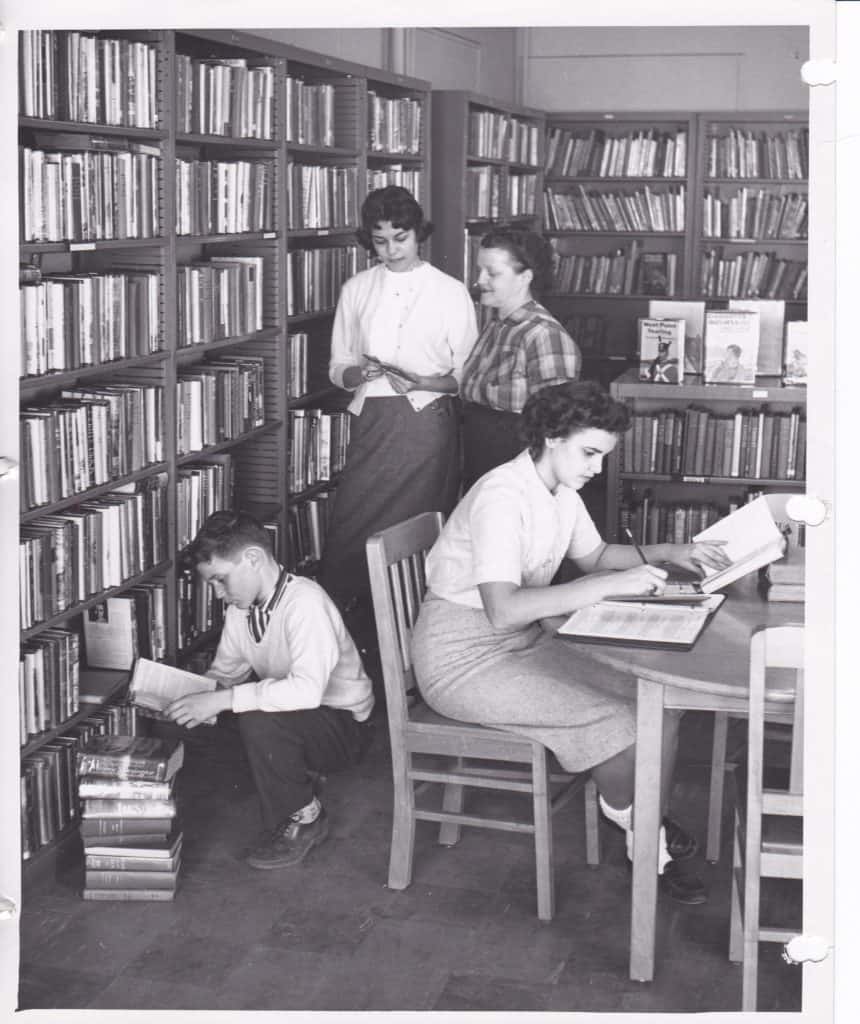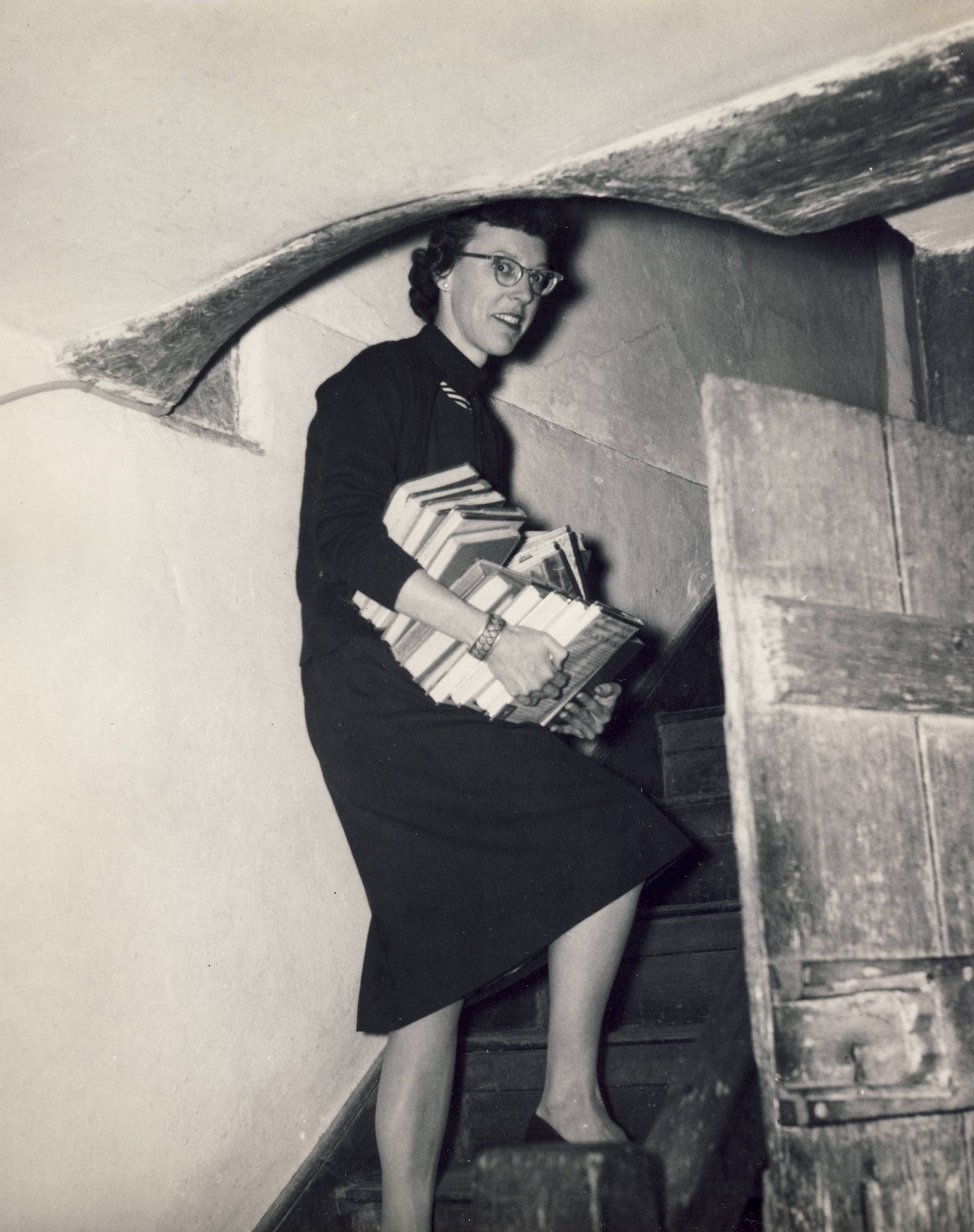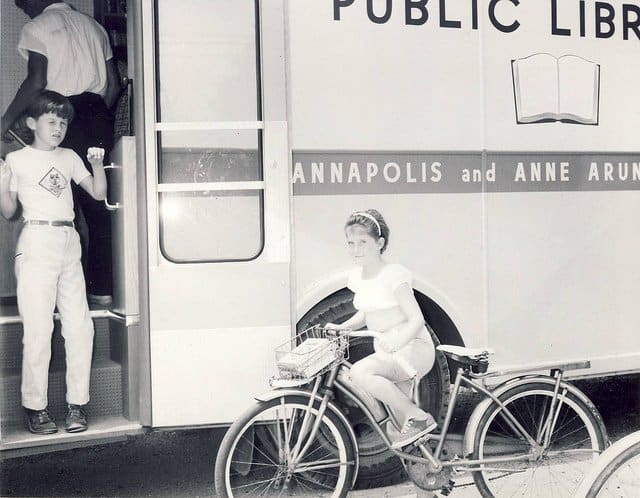A Century of Reading

Anne Arundel County Public Library system celebrates 100th Anniversary
By Judy Mudrick Colbert
I was a wide-eyed 12-year-old when I saw a book in my local library with my last name on the spine. The book was by Marvin Mudrick, a distant relative. We never met, but he definitely influenced my life as I promised myself that one day, I’d have a book with my name on the spine.
I don’t even remember the book’s title, but I vividly recall the library, the light coming in the windows, and the murals on the walls. Much has changed since then.
A century ago, the radio provided our primary entertainment and if we wanted to stream something, we went to a nearby park or forest to watch a refreshing brook or river. The average family income was about $3,300 a year.
It was over 100 years ago that the first Anne Arundel County public library opened its doors in the municipal building in downtown Annapolis, on January 8, 1921, says library CEO Skip Auld. At that time, it was open three days a week for two hours a day. Customers could browse about 2,000 books that were donated or funded by local churches and civic organizations.
“It cost 10 cents to get a library identification card back then,” says Christine Feldmann, AACPL’s communications director. “It was the only place where something that cost money in 1921, actually costs less 100 years later.”

Wanda Wagner (Glen Burnie) and Ruby Jaby (Crofton) are AACPL’s longest serving employees, with Wagner starting on June 27, 1973 and Jaby on August 8, 1973.
Wagner began her library career as a page, an employee who reshelves all the materials. “That part of the library system hasn’t changed much over the years,” she says. “The game changer for us was the early ‘90s, when the web made its presence known to the world.”
The local librarians were who you turned to for information before the internet was invented—they knew how to get answers for all sorts of questions.
“We’d get on the phone and talk to other librarians,” says Jaby.
“Many times, when we couldn’t find the information for a customer, we’d have to refer them to an academic or say, ‘No, we can’t find that,’” adds Wagner.
The arrival of computers was welcomed for the most part. “The technology was a life changer. I am glad of it,” Jaby says.

Today’s library system has 16 branches and serves about a million patrons a year, library cards are free and there are no fines for late books borrowed by children and teens.
“Everything that we do in a public library is about the people we serve,” says Wagner, “and the communities we work in. Some communities are self-sufficient or some may have more people who lack the technical skills to navigate the computers. They’re relying on the library staff to help them complete a job application, resume, or a social services file for unemployment. The library used to be a place to borrow books. Now it’s a social service center.”
The library has always been a place where ideas are born. One of the ideas was rethinking where a library should be located. AACPL branches have been in schools, the Reynolds Tavern, a train station, shopping centers and now, with the opening of The Discoveries branch in Westfield Annapolis in 2018, a mall. A bookmobile brought the library to the patrons from 1947 to about 1983.

The library is also a place of innovation. One of the services added in the past few years is use of 3D printers, which can manufacturer all sorts of parts. Last March, when Steven Saint Amour, managing director of underwater robotics company Eclipse Group, heard about PPE shortages, particularly N95 respirators he realized he could use 3D printers to help out.
“A call was issued to 71 schools and parents through St. Mary’s High School and suddenly we had 61 printers that were used to print more than 10,000 face shields that were sent, free, to qualified medical facilities in Maryland and as far as Tennessee and Virginia,” said Saint Amour. Six of those printers came from AACPL.

Libraries played an early role in Saint Amour’s life. “I didn’t like reading,” he says. “My father… thought I was watching too much TV, so he said I had to read an hour for every hour I watched television, with the reading before the watching. I started, begrudgingly, and then, suddenly I was a voracious reader. The old stone building, that library, was special, like going into a church. I have a huge library now.”
Another library program you probably wouldn’t have seen a century ago is a ukulele lending service at Glen Burnie’s branch, where the instruments are available for a three-week loan. Sally Miller, library associate, says the program started about five years ago. The early learning staff wanted to add a ukulele option to the youth programs. “A local group just out of the blue said they were hoping to meet in the Glen Burnie area, and would the library partner with them for a monthly night so they could play.”
Other clubs started meeting monthly at Riviera Beach and then Severna Park. “The group donated eight instruments to the library and the library foundation provided the funds to buy a carrying case and a couple of other things to go with them. It was an instant hit and the instruments have stayed checked out pretty much until the start of the pandemic, even though they may be still checked out,” says Miller.
When the pandemic forced the libraries to close their doors, the system extended Wi-Fi access to most of its parking lots and offered remote printing. Library programs switched to Zoom and Facebook Live. Branches got creative, offering face masks, to-go crafts packages, and use of Chromebooks (at Brooklyn Park, Deale, Mountain Road, Severn and soon at Maryland City at Russett). They continued the 1,000 Books Before Kindergarten program; contactless Curbside Plus service; telephone assistance; tens of thousands of eBooks, audiobooks, digital magazines, and streaming movies; online resources for job searches; and homework help.
Having options, even when patrons cannot be indoors, means a lot to library-goers. “I’m so glad the library is open. I drive a truck and the library is very important to me. To listen to a novel instead of the radio provides a sense of normalcy instead of panic and allows me to simply enjoy my life” says Steven Zyla.
“I love my library,” says Mary Beth Wynne. “Who knew the library could give me names of notaries in Shady Side, provide printing, and help my aging father get some paperwork done curbside? The library is awesome.”
An important anniversary means AACPL does have some special celebrations planned. “Residents can expect a year full of reflection and excitement as we mark our past, celebrate our community impact, and imagine our future,” says Auld.
And staff are ready to fling their doors open again. “We are still poised and ready to pivot when the numbers start coming down again,” Wagner says.
Until then, AACPL wants to hear patrons’ memories and share some of their own on their YouTube channel www.youtube.com/user/aacpl13.
See a timeline of the library as well as upcoming online programming at www.AACPL.net.
